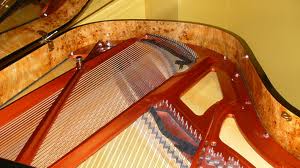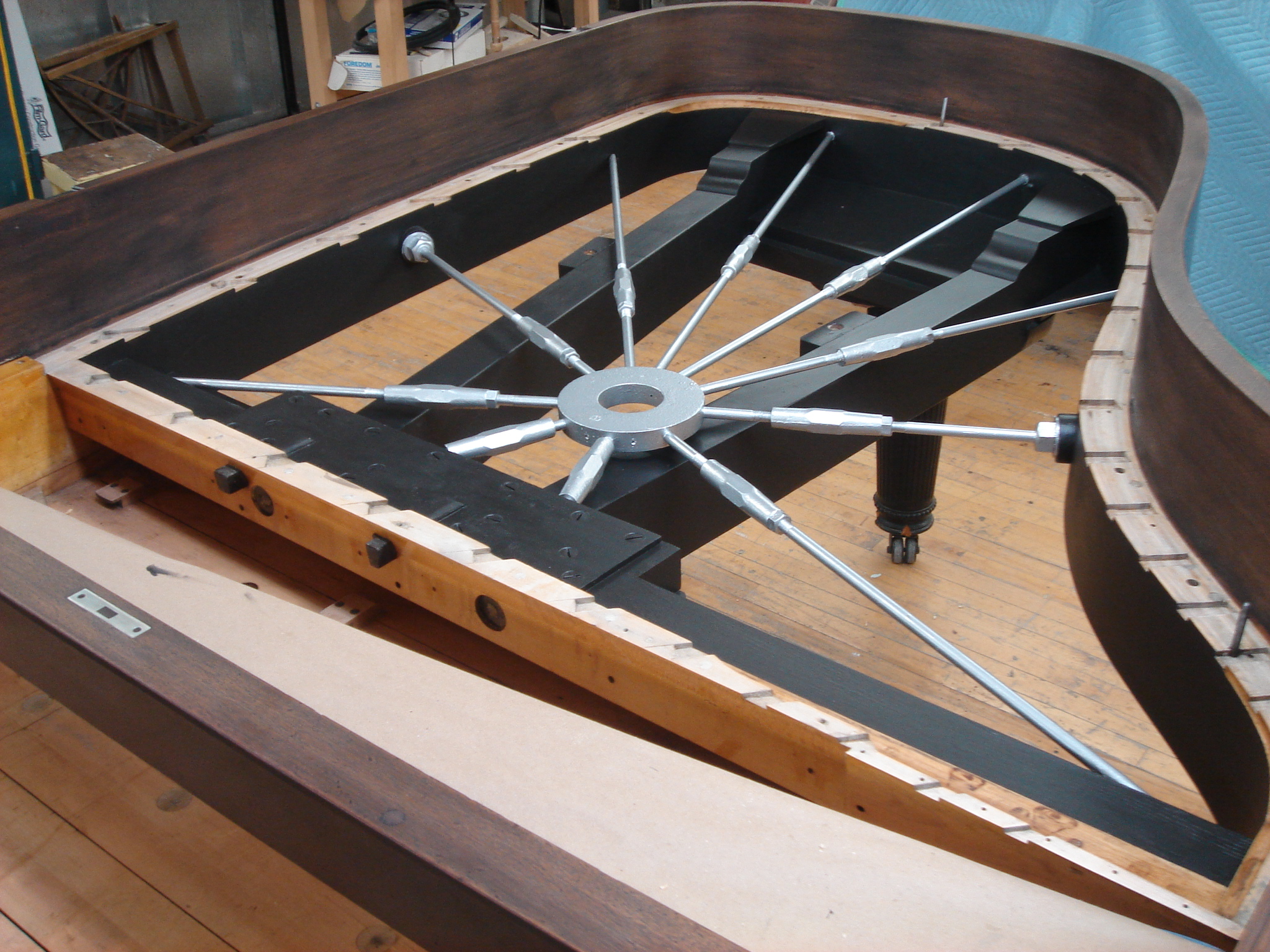
Because each of these parts is so important, it is imperative that they are well protected. Some of the most minuscule and fragile parts of the grand piano are held within the inner rim. This means that the rim should be composed on the finest and most durable quality wood – preferably a laminated maple, spruce or beech wood. Additionally, this also means that regular maintenance. Even the tiniest part of a piano can have a major affect on other areas if it happens to break. For example, a broken string can cause the hammer to wear unevenly, or a broken pin can affect the tension of the strings and throw off the whole sound of the instrument.
The inner rim is the part of the piano that contains the sounding board, or “voice” of the piano as well as the bridge, plate, pin block, tuning pins and strings. In other words, it holds the heart of the piano. All of these parts are extremely important, and here is why:
Sounding Board – This “voice” of the piano is the part that is responsible for taking the vibrations from the strings and amplifying the notes into audible tones. Without the sounding board, the piano’s music would be much softer and not as full-bodied.
Bridge – The bridge is the part of the piano that is responsible for translating the string’s vibration into the sounding board where they are amplified into the music we hear.
Plate – The plate of the piano is generally made of aluminum and cast iron. The reason it is not made of wood – like much of the rest of the instrument – is because it is responsible for holding the tension of the strings. Most grand piano strings have a combined tension of multiple tons.
Pin block – The pin block is a large wood block at the holds all of a piano’s tuning pins. These pins are connected to the stings and affect the tension of the strings. The tension of a string is responsible for the note produced when a key is pressed.
Strings – The strings of a piano are the wires stretched and held into place by the plate. As each key is pressed, a small hammer strikes the string. Each string plays a different note, which is why each key makes a different sound.
If you’re ever curious about what lies within the inner rim of a piano, you can look at a diagram or ask one of the many music experts here at Cooper Piano – but do not attempt to rifle through the parts within a grand piano yourself as just the slightest tug can send a piano out of tune or, worse, cause expensive damage.
Have you seen the inside of the inner rim of a grand piano? Were you surprised by what you saw?







